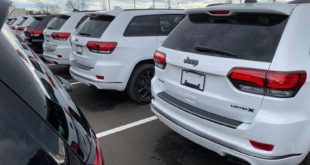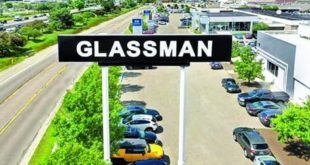While the Small Business Administration’s rapidly deployed Paycheck Protection Program shielded many from disaster, some automotive dealerships struggled to obtain the much-needed support.
Some dealerships had trouble accessing the SBA website in the early days, and some of the documentation on the site didn’t meet compliance standards, according to Pete Carey, group vice president at Toyota Financial Services. About 76 percent of U.S. new-car dealerships received loans above $ 150,000, the SBA disclosed in July, taking between $ 6.97 billion and $ 10.36 billion in program loans.
But not every retailer was able to obtain the loans on the first try. Even when dealerships were able to apply, some were denied funding.
The program “was breaking down,” Carey told Automotive News. “Some of the lenders the dealers had relationships with were not going to fulfill their requests to participate.”
That’s why on March 31, four days after the Coronavirus Aid, Relief, and Economic Security Act was signed into law, Toyota Financial Savings Bank applied to become an SBA lender. On April 4, TFSB submitted its first loan application on behalf of a dealership.
Only direct-lending institutions were eligible to participate, according to Mara McNeill, CEO of Toyota Financial Savings Bank, and most captives don’t meet the federal requirements.
“As an industrial loan company, TFSB is supervised and examined both by our Nevada state bank regulator” and by the Federal Deposit Insurance Corp., McNeill said in an email. “Other captives that do not have an [industrial loan company] charter generally are not set up to provide the same level of protections to be eligible to provide such government-backed lending.”
Toyota Financial Services received 400 applications from Lexus, Toyota and Mazda dealerships for relief. The ability to originate the loans under the Toyota brand was an added support for the company’s new dealership partners, said Karen Ideno, group vice president, sales, product and marketing for Mazda Financial Services. Mazda Financial is a captive-like venture that Toyota Financial Services launched April 1.
The bank disseminated $ 500 million in program loans, though it would not disclose the number of dealerships that received funding. As vehicle sales and service business improved, the bank halted the program. The final dealership loan was submitted May 4, McNeill said.
Toyota was not alone in helping dealers secure federal funding. GM Financial assisted 27 dealers who were unable to independently access the program by leveraging its financial relationships. More than 90 percent of General Motors dealers received PPP loans.
Starting in October, TFSB said, it will begin processing forgiveness applications.
Though far from perfect, Carey said, the expeditious creation and deployment of the program was “remarkable.”
“In a fairly short period of time, small businesses across the United States were afforded a lifeline that without they simply wouldn’t have made it,” Carey said. “You hear this comment a lot, that there’s a certain segment of people that are living paycheck to paycheck. Well, what we found out was that there are businesses that live paycheck to paycheck.”


